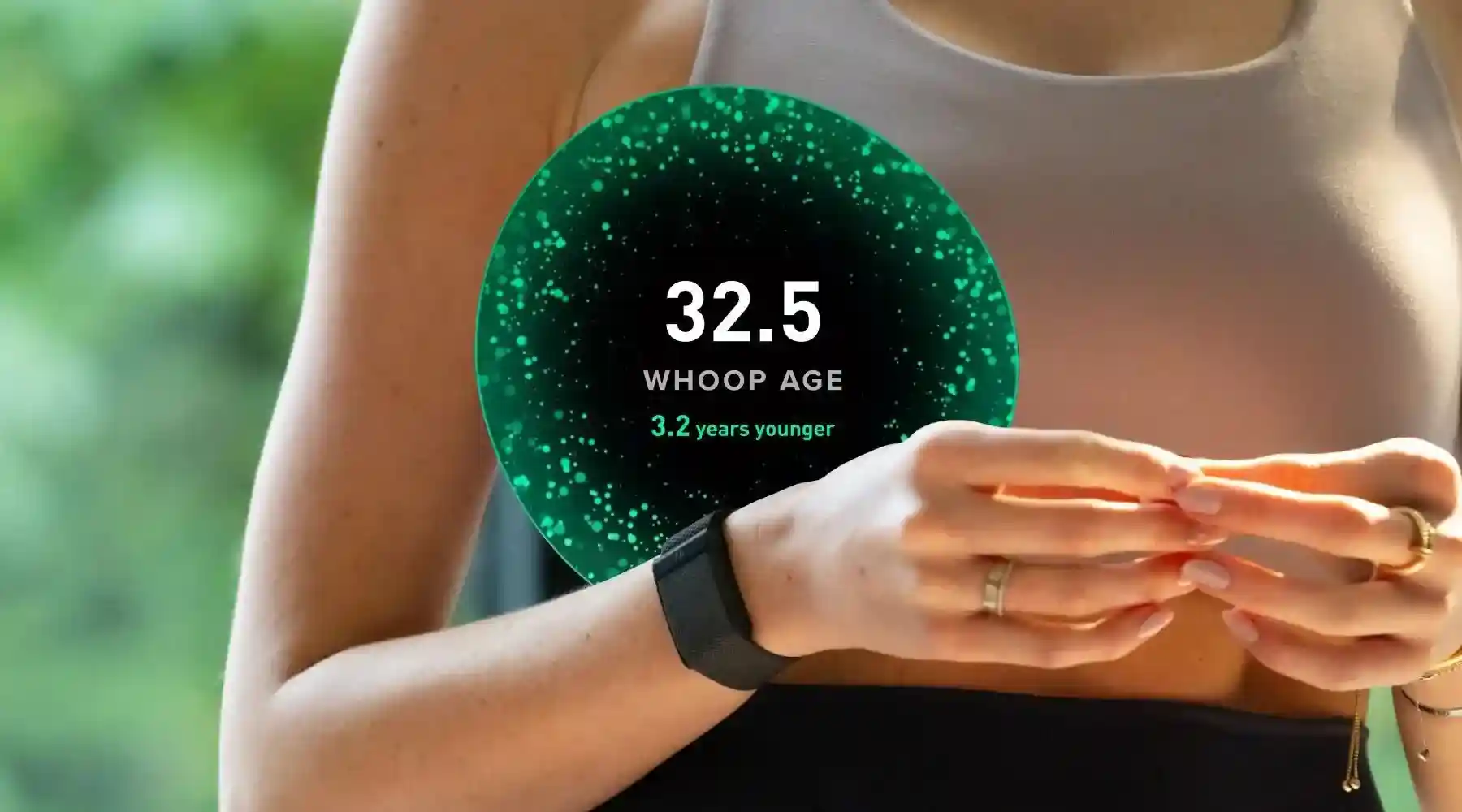Topics
- Article
- Health & Wellness
- App & Features
How Healthspan on WHOOP Helps You Optimize Longevity

Life expectancy has risen worldwide, but people aren’t necessarily living healthier for longer. Americans can expect to spend 15% of their lives in poor health, and by age 65, over 85% of individuals will live with at least one chronic condition. Decades of research have established clear relationships between lifestyle behaviors and physiological metrics with important health outcomes like morbidity and mortality. Healthspan, a feature introduced with the launch of WHOOP 5.0 and MG, interprets key WHOOP metrics in the context of this research, providing an unprecedented view of how daily behaviors impact long-term health.
What is Healthspan and Why Does it Matter?
Healthspan vs. lifespan — what’s the difference?
Lifespan is the total number of years a person lives, while healthspan is the number of years a person lives in good health, without chronic disease. Both of these concepts are measures of longevity, but healthspan offers a more holistic perspective — aiming to quantify quality of life. The “healthspan-lifespan gap” is the difference between an individual’s lifespan and healthspan. While people may live longer now, many spend their later years in poor health due to preventable lifestyle-related health conditions and illnesses.
Nearly 47% of WHOOP members cite “overall health improvement” as their primary goal. Healthspan answers “How healthy am I?” and “Am I on the right track?” with transparent metrics and weekly, personalized coaching.
The Science Behind Healthspan
How WHOOP Age and Pace of Aging Work
WHOOP Age estimates “physiological” age based on the last six months of individual health data. A WHOOP Age equal to your actual age means you’re meeting the WHOOP recommendations for good long-term health. Pace of Aging is scored on a scale of -1x to 3x, based on the difference between your most recent 30-day averages for Healthspan metrics compared to your current WHOOP Age. -1x is optimal and means that you’re aging slower, while 1x or higher means that WHOOP Age is increasing faster, indicating potential health risks. Both WHOOP Age and Pace of Aging update weekly. Pace of Aging is more likely to exhibit changes on a week-to-week basis, while WHOOP Age is a slower-moving metric and may take longer to change.
The Healthspan feature unlocks once you achieve 21 Recoveries in a 31-day period. You must have 21 Recoveries within every 31-day period for Healthspan to continue to update. In the initial first weeks after Healthspan is unlocked, WHOOP Age may exhibit more rapid changes on a weekly basis as it fully calibrates to behavioral and metric baselines.
The nine metrics behind WHOOP Age and Pace of Aging
Healthspan combines nine science-backed metrics shown to relate to long-term health. Sleep consistency: Consistent sleep and wake times promote cognitive function, mental health, and cardiovascular health.
Sleep duration: Sufficient sleep supports recovery, metabolic health, and brain function.
Daily steps: Higher step counts are associated with a lower risk of cardiovascular mortality. Time in Heart Rate Zones 1–3: Moderate activity supports endurance and metabolic health. Time in Heart Rate Zones 4–5: High-intensity work improves cardiovascular fitness. Strength activity time: Regular strength work, from powerlifting to yoga, supports musculoskeletal and neuromuscular health.
VO₂ Max: A powerful predictor of long-term health and overall fitness. Resting heart rate: Lower RHR aligns with cardiovascular efficiency and autonomic balance. Lean body mass: Maintaining muscle mass is critical for bone density, metabolism, and long-term mobility.
How to Use Healthspan
1. Spot strengths and gaps: See which contributors are slowing down or speeding up your Pace of Aging.
2. Adjust habits with coaching: Based on these insights into how everyday habits influence Healthspan metrics, incorporate lifestyle adjustments to promote long-term health. Examples of habit changes that can be supported by Healthspan include:
- Improve sleep habits → Enhance recovery and cognitive function.
- Increase daily movement → Lower risk of cardiovascular mortality.
- Incorporate strength training → Maintain muscle mass and metabolic health.
3. Set sustainable goals: Healthspan offers actionable insights and individualized recommendations that suggest high-impact behaviors to improve longevity. Set goals and follow targeted recommendations tailored to your baseline.
4. Make it a weekly ritual: Because Healthspan updates on Sundays, you get a natural rhythm for checking in, seeing what moved your Pace of Aging and adjusting for the week ahead. Notifications about updates and in-app coaching insights encourage consistent engagement.
Take Control of Your Longevity with WHOOP Healthspan
Healthspan on WHOOP represents a unique opportunity to bridge the gap between lifespan and healthspan. Whether your focus is preventing future health risks, optimizing fitness, or finding a science-based strategy for tracking longevity, Healthspan empowers you to take control of your aging and health. This feature is not available for users under the age of 18.